Boa Constrictor: Species Profile
Updated on 04/26/24
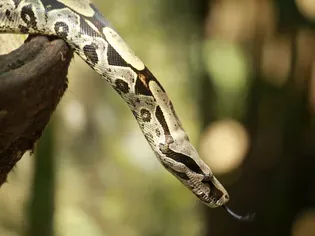
Boa Constrictor: An Enigmatic and Captivating Species
Prepare to embark on an extraordinary journey as we delve into the fascinating world of Boa constrictors. These remarkable creatures, with their captivating beauty and enigmatic nature, have captivated the imaginations of humans for centuries. From their impressive size and muscular prowess to their intriguing hunting techniques and diverse habitats, Boa constrictors continue to enthrall all who encounter them.
Taxonomy and Evolution
Boa constrictors belong to the genus Boa, classified under the family Boidae. They are native to Central and South America, and their distribution spans from Mexico to Argentina. The taxonomic history of Boa constrictors is complex, with various subspecies recognized based on subtle variations in morphology, coloration, and geographic distribution.
Physical Characteristics
Boa constrictors are known for their impressive size, with some specimens reaching lengths of up to 13 feet. Their bodies are adorned with intricate patterns of brown, black, and white or cream markings, providing them with excellent camouflage in their natural habitats.
Boa constrictors possess a muscular body with well-defined neck and tail regions. Their heads are triangular, with large eyes and heat-sensing pits. Their scales are smooth and iridescent, adding to their overall beauty.
Hunting and Feeding
Boas are apex predators, commanding a formidable presence in their ecosystems. They primarily feed on small mammals, birds, and reptiles. Their hunting techniques involve lying in ambush, employing their keen senses to detect prey. When an opportunity presents itself, they swiftly strike, utilizing their powerful jaws to pierce their victim's flesh.
Unlike venomous snakes, Boas subdue their prey through constriction. Once they have a firm grip, they wrap their coils around the victim, applying immense pressure. This technique, known as constriction, disrupts blood flow and eventually leads to the death of the prey.
Habitat and Distribution
Boa constrictors exhibit a remarkable adaptability, inhabiting a wide range of ecosystems. They can be found in tropical rainforests, dry savannas, grasslands, and even urban areas. Their flexibility allows them to thrive in diverse environments, from sea level to elevations of up to 10,000 feet.
Boa constrictors are territorial animals, establishing home ranges that they actively defend. They are generally nocturnal, spending most of their time hidden in crevices, burrows, or dense vegetation.
Reproduction and Life Cycle
Boas are sexually mature at around 3-4 years of age. The mating season typically occurs during the cooler months, and females lay clutches of eggs ranging in size from 10 to 60. The eggs are deposited in concealed locations, often underground or in vegetation.
Incubation takes approximately 60-90 days, and hatchlings emerge as fully formed miniature Boas. They are independent from birth and receive no parental care.
Conservation and Captivity
Boa constrictors play an essential role in maintaining ecological balance in their ecosystems. However, some populations face threats from habitat loss, hunting, and the pet trade. Conservation efforts are underway to protect these remarkable creatures and ensure their survival in the wild.
Boa constrictors are also popular in captivity, and their striking appearance and relatively docile nature have made them a common choice for reptile enthusiasts. However, it's crucial to provide them with proper care, including an appropriate enclosure, adequate lighting, heating, and a diet that meets their nutritional needs.
Conclusion
The Boa constrictor is an iconic species that evokes both awe and wonder. Their beauty, strength, and intriguing hunting techniques have captivated humans for centuries. Whether you encounter them in the wild or admire their captivating presence in captivity, these enigmatic creatures continue to fascinate and inspire us. By understanding and appreciating the Boa constrictor's unique characteristics and ecological significance, we can contribute to their well-being and ensure their continued survival.
Additional Subtopics
* Subtopic 1: Myths and Legends
Boa constrictors have long been entangled in human mythology and folklore. In some cultures, they are revered as symbols of power and knowledge, while in others, they are perceived as harbingers of danger and evil. Explore the fascinating world of myths and legends surrounding Boa constrictors.
* Subtopic 2: Boa Constrictors in the Wild
Join us on an exploration of the natural habitats of Boa constrictors. Discover the diverse ecosystems they inhabit, their hunting strategies, and the fascinating interactions they have with other species.
* Subtopic 3: Keeping Boa Constrictors in Captivity
If you're considering bringing a Boa constrictor into your home, it's essential to be well-informed about their care requirements. Learn about the appropriate enclosure size, lighting, heating, diet, and veterinary care needed to ensure the well-being of these beautiful creatures.
* Subtopic 4: Conservation and the Future of Boa Constrictors
Boa constrictors face various threats in the wild, including habitat loss, hunting, and the pet trade. Explore the conservation efforts underway to protect these magnificent snakes and ensure their continued presence in the ecosystems they call home.
Explore More Pets
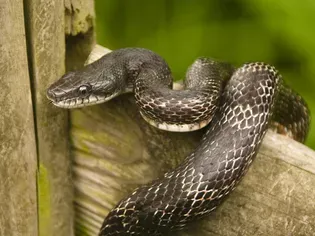
Pet Snake Species
Black Rat Snake: Species Profile

Pet Snake Species
How to Care for a Pet Corn Snake
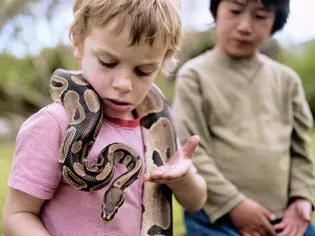
Pet Snake Species
Do Ball Pythons Make Good Pets?
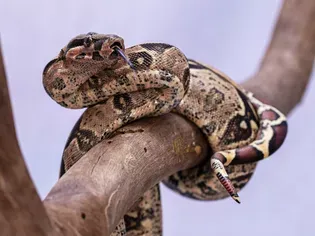
Pet Snake Species
Central American Boa Species Profile
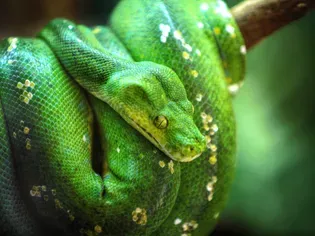
Pet Snake Species
How to Care for a Pet Green Tree Python
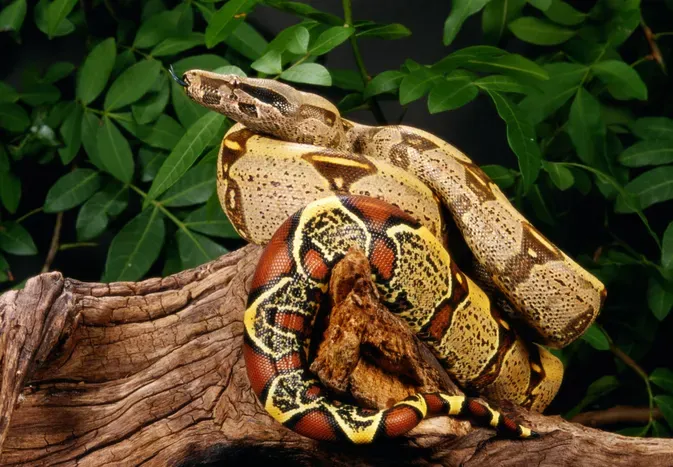
Pet Snake Species
Red Tail Boas
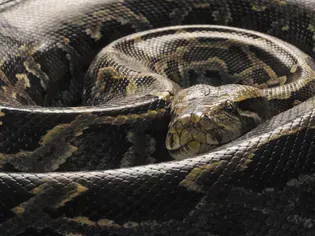
Pet Snake Species
Burmese Pythons: Species Profile
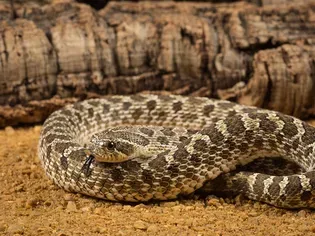
Pet Snake Species
Hognose Snake: Species Profile